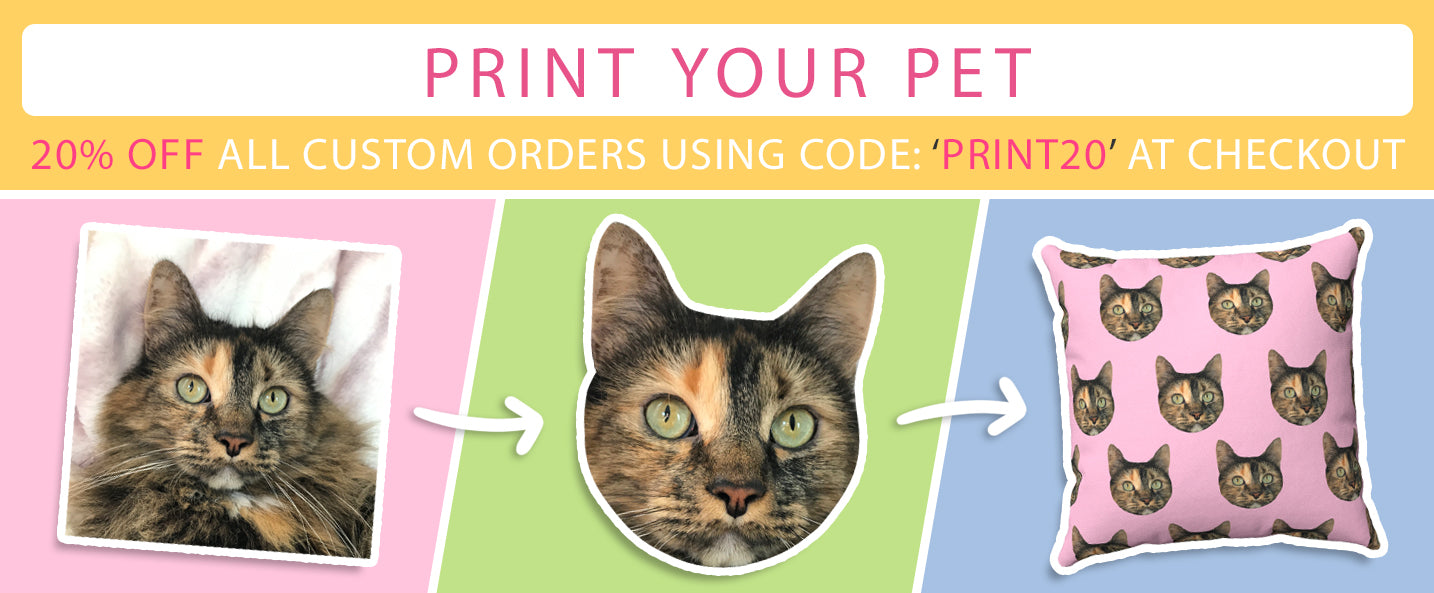How Black Cats Became Associated With Halloween

It's National Black Cat Day! To celebrate these inky felines that are near and dear to so many hearts, we're examining why black cats tend to get a bad rap amongst non-cat lovers. Why are they associated with bad luck? How did they become Halloween icons? We think if a black cat crosses your path, you should pet it!
Black cats are known for being very adorable and very talkative. Halloween is known for its celebration of all things spooky: ghosts, pumpkins with creepy faces, shambling skeletons, and things that go bump in the night. So how did cats, especially black cats, get tangled up in all this spooky business?
As with most holidays, it has everything to do with history. The origins of Halloween are generally traced back to the Celtic festival of Samhain, a sacred celebration that marked the end of summer. While this festival did not originally involve witches and sorcery, the Celtic people did wear ghostly and ghoulish costumes to keep wandering spirits from bothering them by making themselves appear as spirits themselves. Do you have your Halloween costume yet - does your cat?
The Fairy King of Cats
While black cats being a symbol of Halloween seems to be a fairly recent commercial evolution, Samhain did have one very special feline guest: Cait Sidhe. Cait Sidhe (pronounced “kate shee”) is known to be a magical, mischievous creature known as a “fey” or “faerie”; Cait Sidhe is known as the Faerie King of Cats. He was said to be a large, all black cat with a single white spot on its chest. On the night of Samhain, if you left a saucer of milk out for the fairy cat, your house would be blessed – much like leaving milk and cookies out for Santa Claus! If no milk was left for the mysterious black cat, you would be cursed and all your cow’s milk would dry up.

Black Cats And Witches
Beyond the mischievous Cat King, black cats have long been surrounded by myth, legends, and superstitions. They have been cast as omens of bad fortune and associated with witchcraft and Satan. In 1233, Pope Gregory IX issued a papal bull titled Vox in Rama that declared cats, specifically black cats, were symbols of Satan; this is often traced back to the beginning of the vilification of cats and black cats in particular. Thanks, Greg.
Pope Gregory IX.
Credit: Wikimedia Commons // Public Domain
Legends began to spread across medieval Europe that the devil would gift black cats to witches to act as their servants – often called an “animal familiar.”
Puritans in the 1700s, the people responsible for the infamous Salem Witch Trials, believed that witches could shape-shift into black cats, and would do so to prowl through their neighbors’ homes and spy on them to bring back information to the devil himself. The witch hunts eventually subsided in the colonies, but the damage had been done: black cats were cemented as mysterious, evil figures alongside witches.
Tying back to the festival of Samhain, it is believed that the Druids, the "mystical" pagan figures who originated the celebration would later be labeled as "witches," thus linking black cats with Halloween. And as Halloween developed into a more commercially celebrated holiday that celebrated witchy figures, black cats came along for the ride.

Today, thanks to these historic origins, many black cat superstitions still make their way around the world, especially around Halloween. Unfortunately, this reputation can make Halloween a dangerous time for black cats, as they may become targets for animal cruelty. My first ever cat was a black cat named Smokette. And every Halloween, I was extra careful to make sure she was safe inside just in case.
Some debate that this too is urban myth and legend, but many shelters refuse to adopt out black cats in the month of October to keep them safe from abuse. While this may be an urban legend, it's still probably better to err on the side of caution if you have a black cat at home. Keep them indoors this Halloween.
The stereotypes surrounding black cats can also sometimes make them less adoptable at animal shelters, when they're just as perfect as any other cat.
Cute toe beans? Check. Adorable triangle ears? Check. Beautiful, silky fur? Check. They've got it all, wrapped up in a beautiful inky package. Speaking from experience, the only thing you have to watch out for with black cats is accidentally sitting on them when they sit on your black chairs because they have perfect camouflage.
And did you know - other cultures from around the world consider black cats to bring good luck? With this in mind, we're encouraging folks out there interested in adopting a cat to consider adopting a black cat.
Do you have a black cat at home? Now you can get their photo printed on any custom item, like a mug or blanket! Click here or on the image below for more details.




















Leave a comment